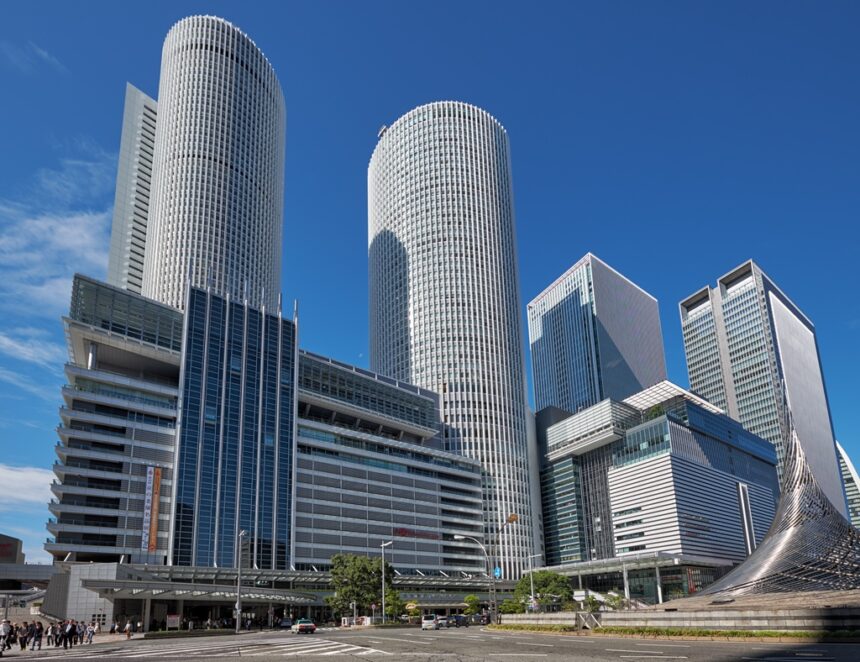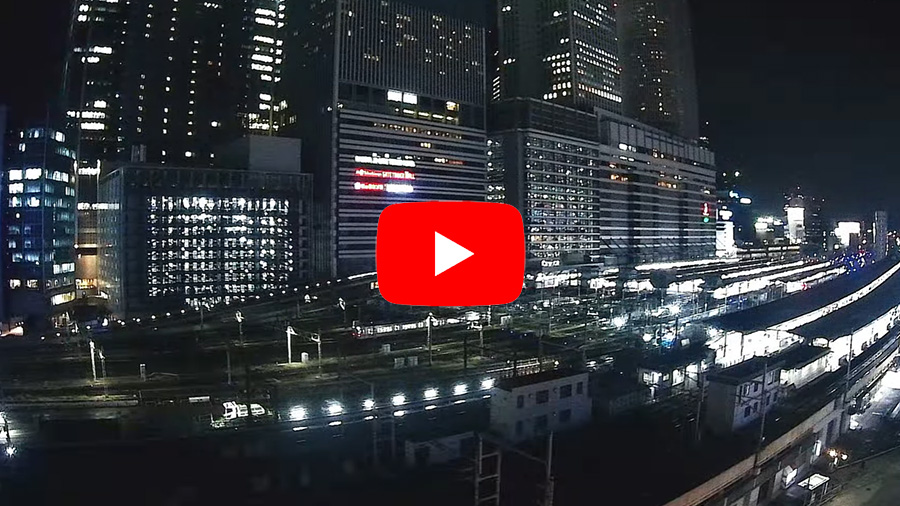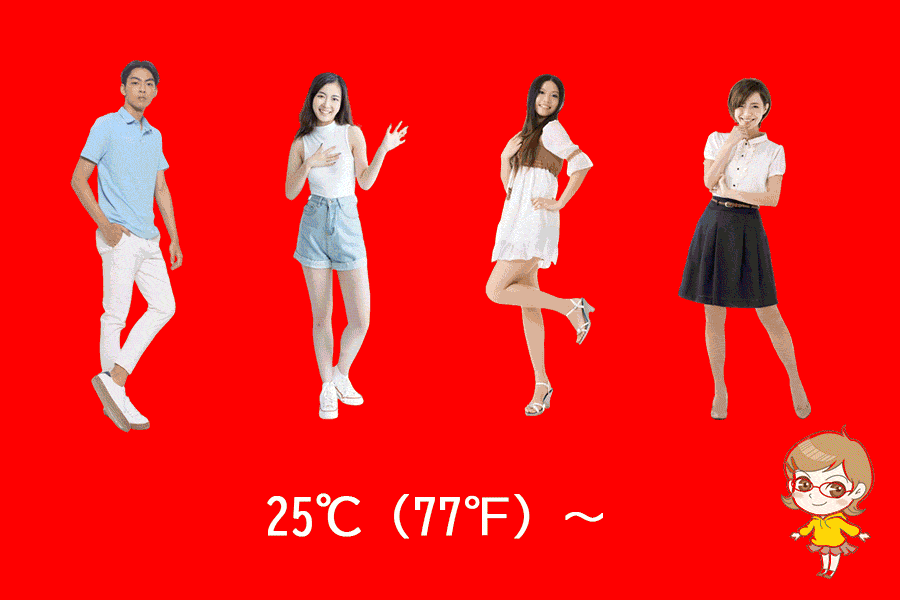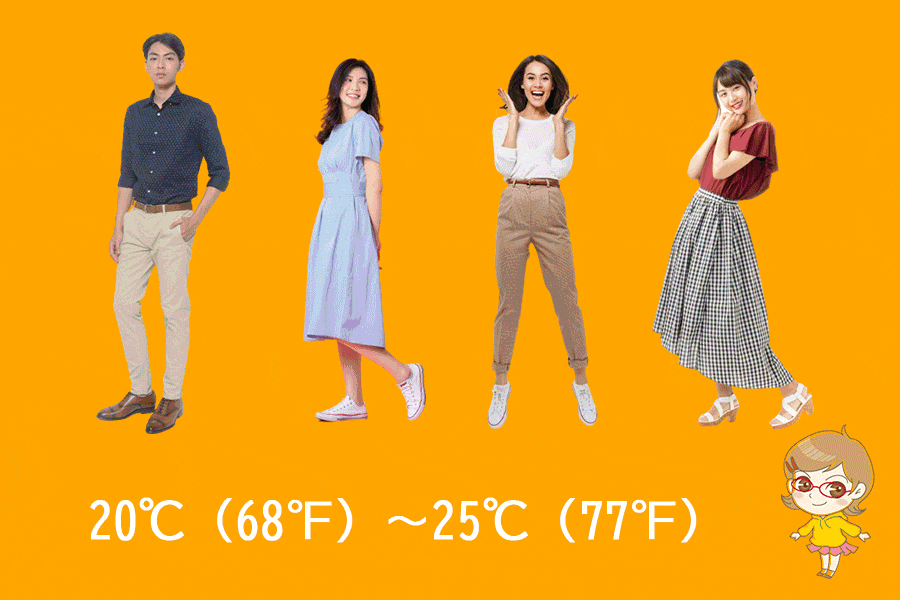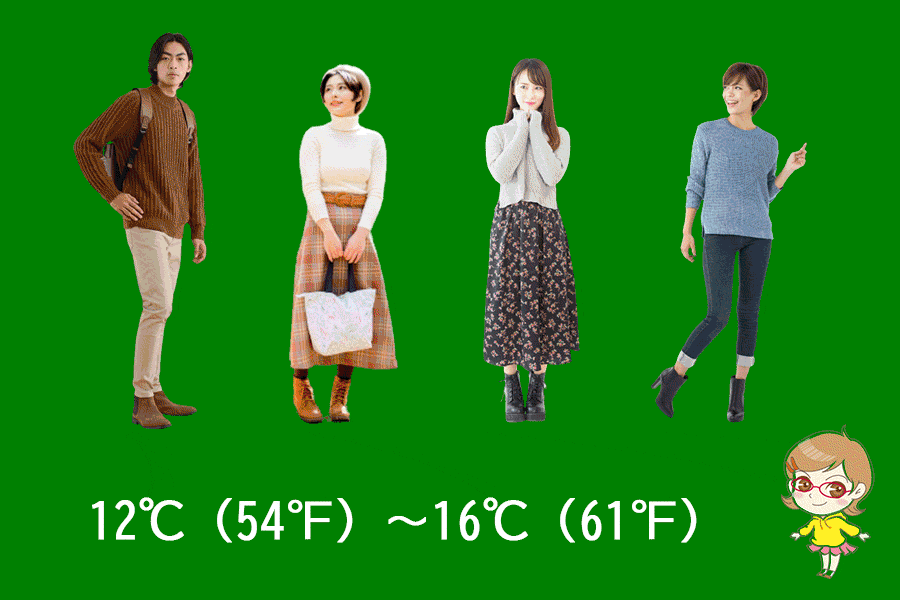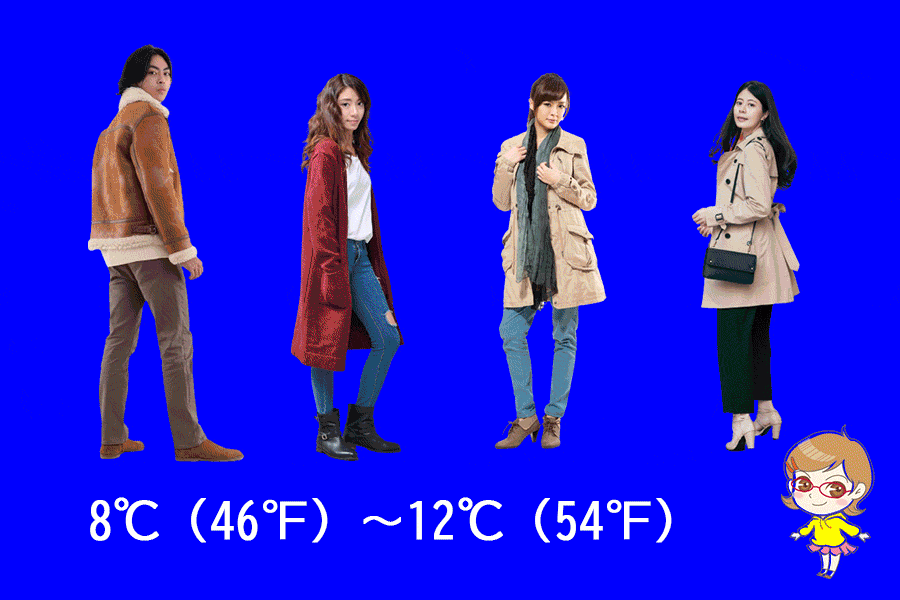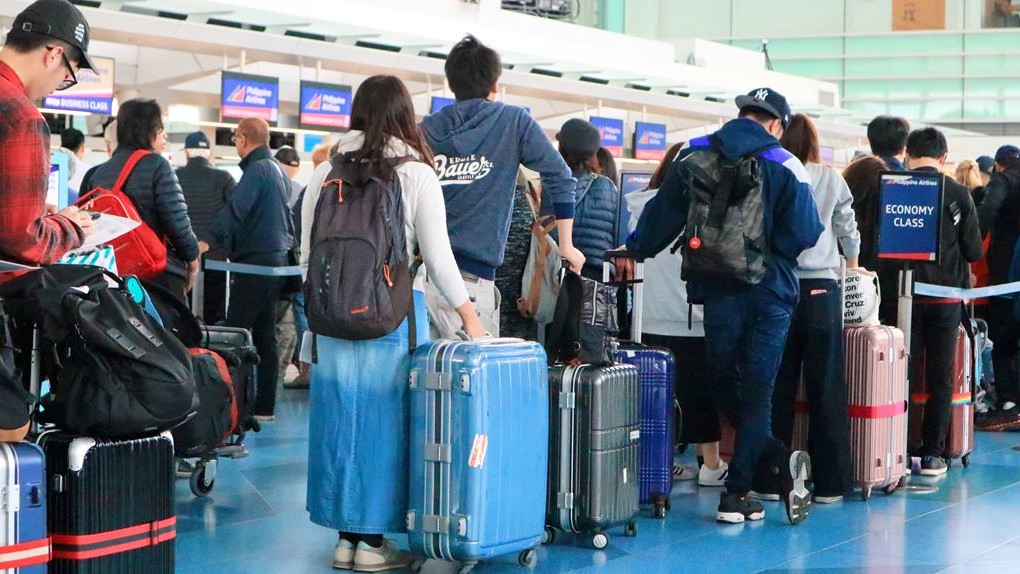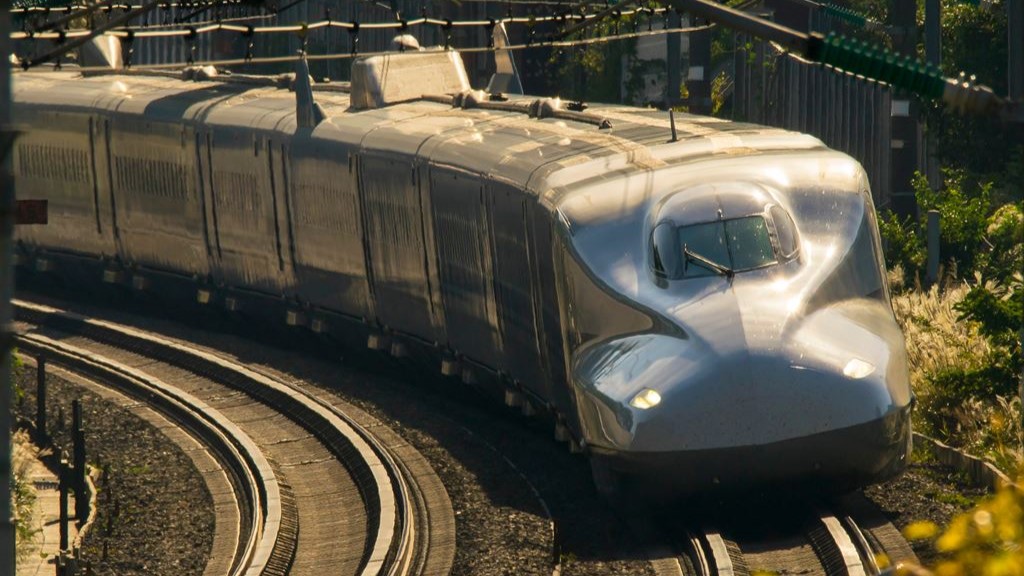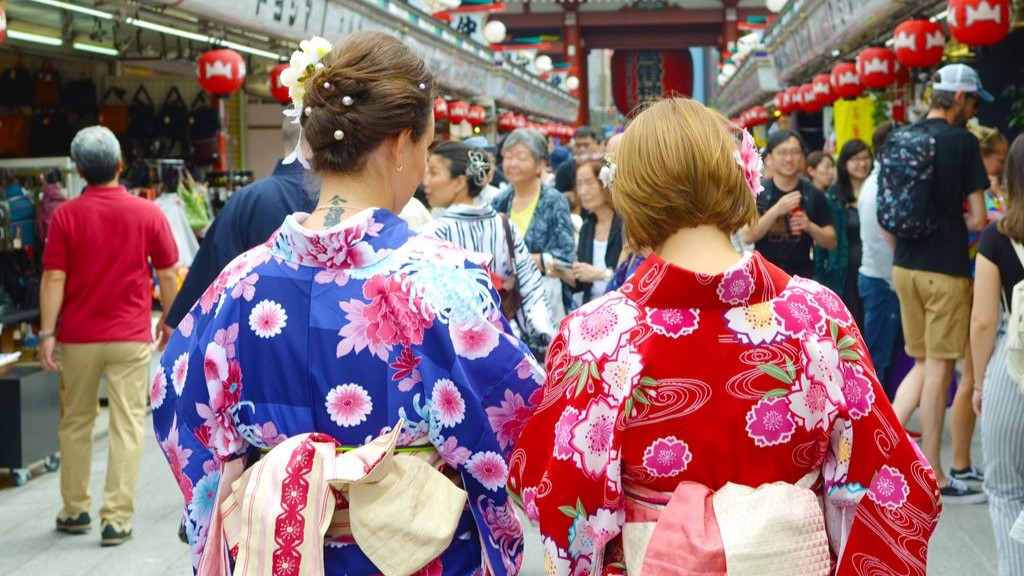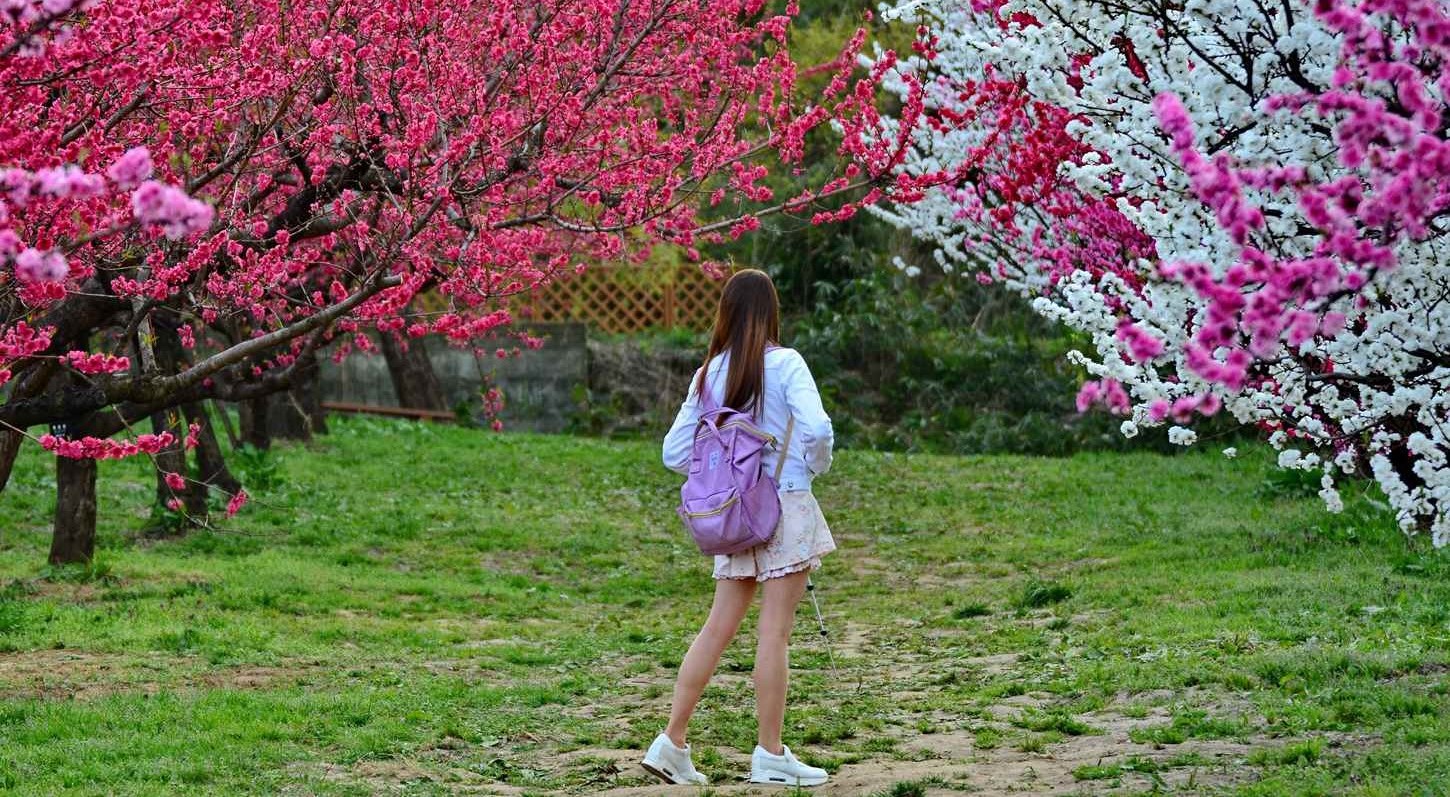1 Chome-1-4 Meieki, Nakamura Ward, Nagoya, Aichi MAP
↓ Click to jump to the relevant section.
| Current Weather | Annual Weather | Tourist Attractions |
| Baggage Deposit | Hotels |
Current weather and clothing

The weather information shown here is the information closest to the station in question. Please note that there may be slight differences.
Yearly temperature changes and recommended clothing
Clothing recommendations for each temperature range
When traveling in Japan with the following average temperatures, the recommended clothing is as follows:
Monthly changes in temperature, precipitation, and snowfall (1991~2020 average, Japan Meteorological Agency survey)
| Jan. | Feb. | Mar. | Apr. | May | Jun. | Jul. | Aug. | Sep. | Oct. | Nov. | Dec. | |
| temperature(°C) | 4.8 | 5.5 | 9.2 | 14.6 | 19.4 | 23 | 26.9 | 28.2 | 24.5 | 18.6 | 12.6 | 7.2 |
| precipitation(mm) | 50.8 | 64.7 | 116.2 | 127.5 | 150.3 | 186.5 | 211.4 | 139.5 | 231.6 | 164.7 | 79.1 | 56.6 |
| snowfall(cm) | 4 | 5 | 0 | — | — | — | — | — | — | — | — | 3 |
Winter
December
December is the start of the winter season in Nagoya. The average temperature drops to 7.2 degrees Celsius, and the average precipitation is 56.6 millimeters. It is recommended to wear warm clothing such as heavy coats, jackets, sweaters, pants, and closed-toe shoes. Additionally, it is important to wear accessories such as hats, scarves, and gloves to protect from the cold weather.
January
January is one of the coldest months in Nagoya with an average temperature of 4.8 °C. The weather is generally dry, but there may be occasional snowfall, especially in the latter part of the month. Visitors should bring warm and waterproof clothing, including gloves, hats, scarves, and a thick jacket. Layering is also recommended to provide warmth in case of sudden drops in temperature. For women, fur-lined boots, thermal leggings, and long coats are great additions to a winter wardrobe, while men should consider bringing a winter coat, thermal undergarments, and boots.
February
February is similarly cold, with an average temperature of 5.5°C, and there may still be occasional snowfall. It is important to dress warmly and prepare for the cold weather. Winter clothing is still recommended, such as warm jackets, woolen hats, scarves, and gloves. Layering is also advisable for sudden changes in temperature. Women should consider wearing woolen or thermal tights, thick boots, and long coats, while men should consider wearing insulated jackets, hats, and gloves.
Spring
March
March marks the beginning of spring in Nagoya, with an average temperature of 9.2°C. The weather can still be cold, especially in the early part of the month, so warm clothing is still essential. Visitors should bring a mix of warm and cool clothing, such as a light jacket and warm sweater. Layering is still advisable, as the temperature may drop suddenly in the evening. Women should consider wearing boots, light sweaters, and long pants or skirts, while men should consider wearing lightweight jackets, long pants, and comfortable shoes.
April
In April, the average temperature rises to 14.6°C, and the weather is mild and pleasant, with plenty of sunshine. Visitors can wear lighter clothing, such as t-shirts, shorts, and skirts. A light jacket may still be necessary in the evenings. Women can wear spring dresses, sandals, and skirts, while men can wear polo shirts, lightweight pants, and comfortable shoes.
May
May is a great time to visit Nagoya, with an average temperature of 19.4°C. The weather is warm and sunny, and visitors can wear summer clothing, such as shorts, t-shirts, and sandals. It may still be chilly in the early morning and evening, so it is still advisable to bring a light jacket. Women should consider bringing sundresses, skirts, and sandals, while men can wear lightweight shirts, shorts, and sneakers.
Summer
June
June is the beginning of the rainy season in Nagoya, with an average temperature of 23°C. Visitors should expect frequent rain showers and high humidity, so it is advisable to bring a lightweight raincoat or umbrella. Women can wear lightweight dresses, skirts, and sandals, while men can wear lightweight pants, t-shirts, and waterproof shoes.
July
In July, the temperature rises to an average of 26.9°C, and the humidity is high. Visitors should wear light and airy clothing to keep cool, such as shorts, t-shirts, and skirts. It is also important to bring a hat, sunscreen, and sunglasses. Women can wear sundresses, skirts, and sandals, while men can wear lightweight shirts, shorts, and sneakers.
August
August is the hottest month in Nagoya, with an average temperature of 28.2°C. Visitors should wear light and breathable clothing to stay cool in the heat. Sunscreen, hats, and sunglasses are also recommended. Women can wear sundresses, shorts, and sandals, while men can wear lightweight shirts, shorts, and comfortable shoes.
Autumn
September
September is the beginning of the autumn season in Nagoya. The temperature starts to cool down, but it still remains quite warm. The average temperature is 24.5 degrees Celsius, and the average precipitation is 231.6 millimeters. It is recommended to wear light clothing such as t-shirts, shorts or skirts, and sandals or sneakers. It is also recommended to bring an umbrella, as there may be occasional rain showers.
October
In October, the temperature starts to drop further, and the weather becomes more comfortable. The average temperature is 18.6 degrees Celsius, and the average precipitation is 164.7 millimeters. It is recommended to wear light jackets or sweaters, pants or jeans, and closed-toe shoes. You may also want to bring an umbrella, as there may still be some occasional rain.
November
November is the start of the cool season in Nagoya. The average temperature drops to 12.6 degrees Celsius, and the average precipitation is 79.1 millimeters. It is recommended to wear warmer clothing such as coats, jackets, sweaters, pants, and closed-toe shoes. It is also recommended to bring an umbrella, as there may still be occasional rain showers.
Recommended tourist destinations
Toyota Commemorative Museum of Industry and Technology
4-1-35 Noritakeshinmachi, Nishi-Ku, Nagoya 451-0051 Aichi Prefecture
This museum, located in the birthplace of the Toyota Group, preserves a factory from the Taisho era as an industrial heritage, and allows visitors to experience the transition of textile machinery that supported the development of modern Japan and automobile technology that continues to pioneer the modern age through dynamic exhibits and demonstrations of real machinery.
Nagoya Castle
1-1 Honmaru, Naka, Nagoya 460-0031 Aichi Prefecture
Nagoya Castle, which has been located in the city center of Nagoya for about 500 years, is a classic spot for anyone who loves castles to visit at least once, being called one of the three most famous castles in Japan along with “Osaka Castle” and “Kumamoto Castle”. The golden Shachihoko at the top of the castle tower is the symbol of Nagoya.
Atsuta Jingu Shrine
1-1-1 Jingu, Atsuta-Ku, Nagoya 456-8585 Aichi Prefecture
Atsuta Jingu was founded in 113, over 1900 years ago. The shrine enshrines Amaterasu, the deity of the sacred sword Kusanagi, one of the three sacred weapons, and is revered as the second shrine to protect the nation after Ise Jingu Shrine. The shrine grounds are lush with camphor trees that are more than 1,000 years old, which will nourish your body and soul. The Treasure House houses more than 6,000 precious votive objects donated by the Imperial Family and other worshippers from all over Japan.
Port of Nagoya Public Aquarium
1-3 Minato-Machi, Minato-Ku, Nagoya 455-0033 Aichi Prefecture
One of the largest aquariums in Japan. The South Pavilion, under the theme of “Journey to the South Pole,” introduces the creatures living in the five water areas along the course of the Antarctic exploration ship from Japan to the South Pole, as well as their natural environment. In the North Pavilion, banded dolphins and belugas are bred and exhibited. In the main pool, the largest in Japan with a stand seating approximately 3,000 people, performances are held to provide visitors with a deeper understanding of their ecology and behavior. Visitors can also meet rare killer whales, which are bred in only two locations in Japan.
SCMAGLEV and Railway Park
3-2-2, Kinjofuto, Minato-ku, Nagoya 455-0848 Aichi Prefecture
This museum is a fun place for all generations to enjoy, introducing advances in high-speed railroad technology through actual exhibits of the latest trains, from steam locomotives and Shinkansen to superconducting linear trains. The museum has an impressive 39 cars on display. The railroad diorama is one of the largest in Japan, and it shows a detailed reproduction of the scenery along the Tokaido Shinkansen line.
Nagoya City Science Museum
2-17-1, Sakae, Naka, Nagoya 460-0008 Aichi Prefecture
A comprehensive science museum equipped with one of the world’s largest planetarium domes, “NTP Planet” with a dome inner diameter of 35 meters. In addition to the exterior design that emphasizes the spherical shape of the dome, there are also four large exhibits rich in entertainment value, including a device that allows visitors to experience aurora images in a room at -30 degrees Celsius and a 9-meter-high artificial tornado.
Higashiyama Zoo & Botanical Garden
3-70 Higashiyama Motomachi, Chikusa-Ku, Nagoya 464-0804 Aichi Prefecture
The number of animals kept here is the largest in Japan, ranging from small killifish to large elephants. The various exhibition facilities, including the gorilla and chimpanzee house, the zoozium (Asian elephant house), and the koala house, offer a wealth of educational exhibits that introduce the ecology and habitats of these animals. Visitors can learn while having fun.
The botanical garden exhibits approximately 7,000 species of plants. The Cherry Blossom Corridor is decorated in spring with 1,000 cherry trees of about 100 varieties. In autumn, about 500 trees around the Okuike Pond and Japanese Garden change color, making it one of the best spots in the city for autumn foliage.
Osu Shopping Street
3, Osu, Naka, Nagoya 460-0011 Aichi Prefecture
It is said to be the most energetic shopping street in Japan, and is always crowded with people and full of vitality, with stores of all kinds ranging from electronics stores to second-hand clothing stores to gourmet restaurants. The shopping street is also home to Manshoji Temple and the Osu Theater is located nearby.
Noritake no Mori
3-1-36 Noritake Shinmachi, Nishi-Ku, Nagoya 451-0051 Aichi Prefecture
Opened to commemorate the 100th anniversary of the founding of the ceramics manufacturer Noritake. Visitors can enjoy a tour of the ceramics factory and a museum displaying old Noritake ceramics on the green-filled grounds, and they can also try their hand at painting. Visitors can also enjoy shopping at Noritake’s directly managed store, which offers a wide range of tableware and tableware-related products. There are also restaurants and cafes that use Noritake tableware.
Tokugawa Art Museum
1017 Tokugawa-cho, Higashi-ku, Nagoya 461-0023 Aichi Prefecture
The museum houses more than 10,000 pieces of “feudal lord’s tools,” which are the belongings of Tokugawa Ieyasu and other members of the Owari Tokugawa family for generations. The museum boasts a wide variety, high quality, and well-preserved condition, including the National Treasure “The Tale of Genji Picture Scroll,” nine National Treasures, and 59 Important Cultural Properties. The main building is registered as a national tangible cultural property.
Where to leave your luggage
There are nine coin lockers scattered throughout JR Nagoya Station. There are also subway and highway bus stops, so coin lockers are located at various locations.
The JR Information Desk is located in front of the Central North Exit ticket gate. There, you will be guided to the location of the coin lockers.
Recommended hotels and inns
Hilton Nagoya
3-3, Sakae 1-chome, Sakae, Naka, Nagoya 460-0008 Aichi Prefecture
16-minutes walk from Nagoya Station
Hotel class: 5
Hotel style: Quiet , Centrally Located
Check Rates & Availability:
>> See on Tripadvisor
>> See on Trip.com
>> See on Expedia
Nagoya Marriott Associa Hotel
1-1-4 Meieki, Nakamura-Ku, Nagoya 450-6002 Aichi Prefecture
3-minutes walk from Nagoya Station
Hotel class: 4.5
Hotel style: Great View , Family
Check Rates & Availability:
>> See on Tripadvisor
>> See on Trip.com
>> See on Expedia
Mitsui Garden Hotel Nagoya Premier
4-11-27 Meieki, Nakamura-Ku Symphony Toyota Bldg., Nagoya 450-0002 Aichi Prefecture
7-minutes walk from Nagoya Station
Hotel class: 4
Hotel style: Modern , Trendy
Check Rates & Availability:
>> See on Tripadvisor
>> See on Trip.com
>> See on Expedia
The Strings Hotel Nagoya
4-60-7 Hiraikecho, Nakamura-ku, Nagoya 453-0872 Aichi Prefecture
10-minutes walk from Nagoya Station
Hotel class: 4
Hotel style: City View , Centrally Located
Check Rates & Availability:
>> See on Tripadvisor
>> See on Trip.com
>> See on Expedia
Nikko Style Nagoya
5-20-13 Meieki, Nakamura-ku,, Nagoya 450-0002 Aichi Prefecture
16-minutes walk from Nagoya Station
Hotel class: 4
Hotel style: Business
Check Rates & Availability:
>> See on Tripadvisor
>> See on Trip.com
>> See on Expedia
Nagoya Kanko Hotel
1-19-30 Nishiki, Naka, Nagoya 460-8608 Aichi Prefecture
17-minutes walk from Nagoya Station
Hotel class: 4
Hotel style: Family , Charming
Check Rates & Availability:
>> See on Tripadvisor
>> See on Trip.com
>> See on Expedia
The Royal Park Canvas – Nagoya
3-23-13 Meieki, Nakamura-Ku, Nagoya 450-0002 Aichi Prefecture
8-minutes walk from Nagoya Station
Hotel class: 3.5
Hotel style: Modern , Quiet
Check Rates & Availability:
>> See on Tripadvisor
>> See on Trip.com
>> See on Expedia
Daiwa Roynet Hotel Nagoya Taikodoriguchi
18-10 Tsubakicho, Nakamura-Ku, Nagoya 453-0015 Aichi Prefecture
4-minutes walk from Nagoya Station
Hotel class: 3
Hotel style: City View , Family
Check Rates & Availability:
>> See on Tripadvisor
>> See on Trip.com
>> See on Expedia
Nagoya JR Gate Tower Hotel
1-1-3 Meieki, Nakamura-ku, Nagoya 450-6660 Aichi Prefecture
4-minutes walk from Nagoya Station
Hotel class: 3
Hotel style: Trendy , Business
Check Rates & Availability:
>> See on Tripadvisor
>> See on Trip.com
>> See on Expedia
Hotel JAL City Nagoya Nishiki
1-16-36 Nishiki, Naka, Nagoya 460-0003 Aichi Prefecture
14-minutes walk from Nagoya Station
Hotel class: 3
Hotel style: Business
Check Rates & Availability:
>> See on Tripadvisor
>> See on Trip.com
>> See on Expedia
We support your itinerary planning!
Click the button to get an overview of hotel information and popular tourist routes from all over Japan featured on our site. We’ve included comprehensive details to aid in planning your trip, so please make use of it.
Comprehensive checklist before traveling to Japan
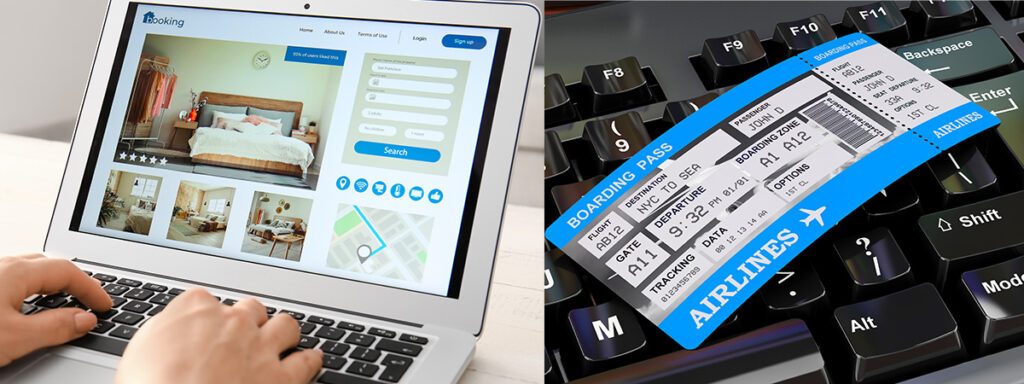
Book flights
Compare and purchase flight tickets
When planning your trip to Japan, it's advisable to start by researching flights several months in advance. Airlines often release promotional fares, especially during off-peak seasons. Use comparison sites like Skyscanner or KAYAK to get a sense of the price range. Be flexible with your travel dates if possible; flying mid-week might be cheaper than on weekends.
>> Visit Skyscanner's official website
>> Visit KAYAK's official website
Order Japan Rail Passes for each family member
Purchase your Japan Rail Pass before departure
The Japan Rail (JR) Pass offers unlimited travel on JR trains, making it a cost-effective option for tourists. However, it's only available to foreign tourists and must be purchased *before* you arrive in Japan. Determine the areas you plan to visit; if you're traveling extensively, a nationwide pass is beneficial, but if you're only exploring a specific region, consider regional JR passes. Children under 12 get a discounted pass, so ensure you order the correct type for each family member.
>>Visit Japan Rail Pass's website
Plan your attire for Japan
Check the weather at your destination on this site
Japanese weather varies significantly by season. In summer, it's hot and humid, so breathable clothes are essential. Winters, especially in the north, can be cold, requiring warm attire. If visiting during the rainy season (June to early July), pack a good umbrella and waterproof shoes. While Japan is generally casual, certain places like temples, shrines, or upscale restaurants may require modest and neat dressing.
Reserve a pocket Wi-Fi or SIM card
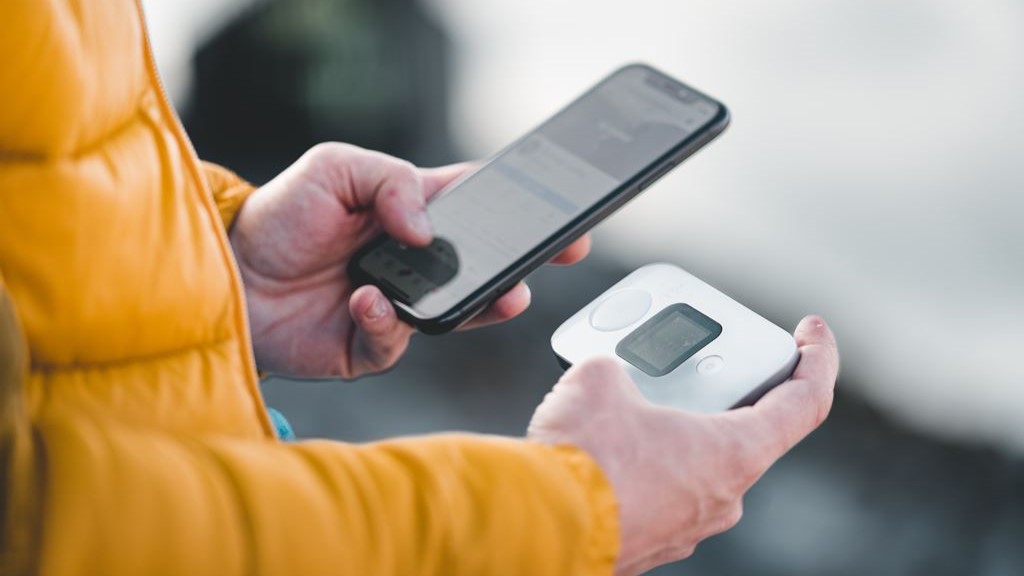
SIM card or pocket Wi-Fi is required
Beyond clothes, consider packing essentials like a universal power adapter (Japan uses Type A and B sockets), portable Wi-Fi or SIM card for internet access, and any necessary medications (with a copy of the prescription).
Which is better: a SIM card or pocket Wi-Fi?
When traveling in Japan, one essential to consider is securing internet access, especially given that many locations still don't offer free Wi-Fi. To ensure you can use your smartphone throughout your trip, you'll typically have three options: (1) a SIM card, (2) pocket Wi-Fi, or (3) the roaming service provided by your mobile company. Roaming services can be quite expensive, so we often recommend using a SIM card or pocket Wi-Fi. While SIM cards tend to be more affordable than pocket Wi-Fi, they can be trickier to set up. Pocket Wi-Fi, on the other hand, can be shared among several users, making it a favorable choice for families or groups.
▼SIM card
Advantages:
Relatively affordable.
Disadvantages:
Can be time-consuming to set up initially.
May have strict data limits.
▼Pocket Wi-Fi
Advantages:
Offers substantial data allowances.
A single device can be shared among multiple users.
Easily usable with PCs as well.
Disadvantages:
Typically more expensive.
Japan's representative services
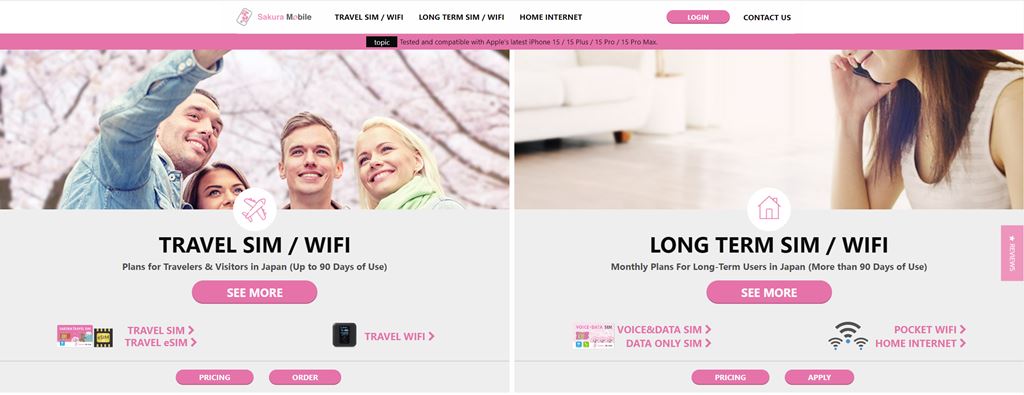
Sakura Mobile's website
▼SIM card
>>Visit Sakura Mobile's official website
>>Visit mobal's official website
▼pocket Wi-Fi
>>Visit Sakura Mobile's official website
>>Visit NINJA WiFi's official website
>>Visit Wi-Fi RENTAL Store's official website
Book local tours as needed
Pre-book your tour and have a great trip!
Local tours offer deep insights into Japan's culture and heritage. Websites like Viator or GetYourGuide offer a variety of tours, from traditional tea ceremonies to modern pop culture tours in Akihabara. Consider unique experiences like staying with monks on Mt. Koya or taking a cooking class to learn authentic Japanese dishes.
>>Visit Viator's official website
>>Visit GetYourGuide's official website
Purchase advance tickets for popular attractions
Make a reservation to avoid crowds
Attractions like Tokyo Disneyland, Universal Studios Japan, or the Studio Ghibli Museum often have long ticket queues. Buy tickets online in advance to save time. Some attractions also have timed entry, so check the specific time slots available and plan accordingly.
▼Tokyo Disney Resort
>>Visit Tokyo Disney Resort official website
>>Visit Viator's Tokyo Disneyland page
>>Visit Viator's Tokyo DisneySea page
>>Visit GetYourGuide's Tokyo Disneyland page
>>Visit GetYourGuide's Tokyo DisneySea page
▼Universal Studios Japan
>>Visit USJ official website
>>Visit Viator's USJ page
>>Visit GetYourGuide's USJ page
Buy travel insurance

insurance concept, health, life and travel insurance
It is important to be prepared for emergencies
While Japan is a safe country, travel insurance is crucial for unforeseen events like health emergencies, travel disruptions, or lost baggage. Ensure your policy covers medical expenses in Japan, as healthcare, though excellent, can be expensive.
Here we introduce online travel insurance services that are popular worldwide.
World Nomads: An online travel insurance service widely endorsed by travelers worldwide. They offer plans that cover adventurous activities and high-risk sports.
>>Visit World Nomads' official website
AIG Travel Guard: An insurance service available to travelers all over the world. They offer a wide range of options, including cancellation protection and emergency medical insurance.
>>Visit AIG Travel Guard's official website
Share your itinerary with emergency contacts
Organize your reservation information
Keep a digital and printed copy of your detailed itinerary, including hotel addresses, train schedules, and booked tours. Share this with a trusted family member or friend not traveling with you.

